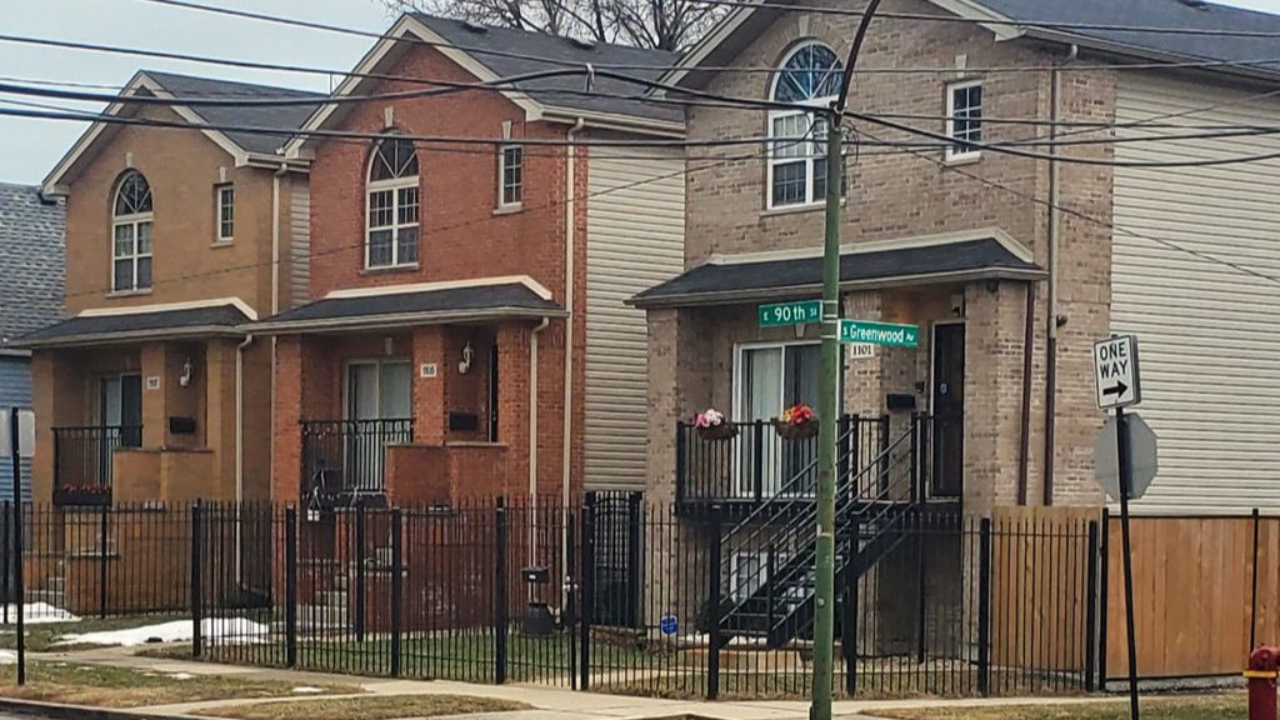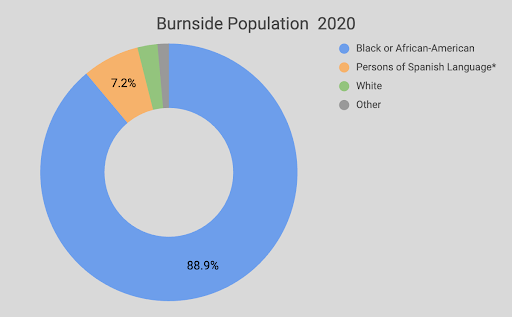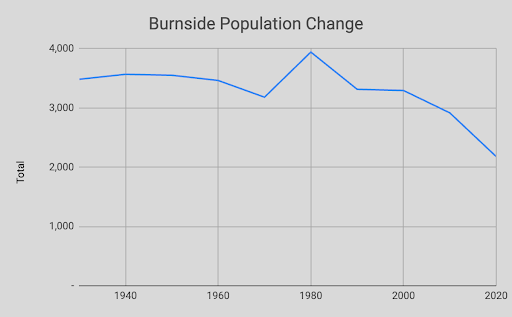Burnside: Chicago’s “Triangle” on the Tracks
Nov 05, 2025
Introduction
Burnside (Community Area 47) is Chicago’s smallest community area by both area and population, yet it holds a distinct place in the city’s history. Bounded on all three sides by railroad tracks—the Illinois Central Railroad to the west, the Rock Island (now part of the Metra/Rock Island line) to the south, and the New York Central (now Norfolk Southern) to the east this “triangle” of tracks has shaped its geography, economy, and identity) and it’s northern boundary of 87th Street.. Originally a marshland and industrial yard, Burnside evolved into a compact residential enclave with deep railroad and immigrant roots.
Trivia Question:
Which Civil War general, who later became an Illinois Central Railroad official and inspired the term for a type of facial hair?
(Answer at the end of the post.)
Origins and Early History
Before the trains and homes, the land that became Burnside was largely low-lying, swampy ground near Lake Calumet. The shape of the neighborhood sometimes called “The Triangle”—comes from the railroad tracks that border it. In 1862, the Illinois Central Railroad established a station here and named it for Ambrose Burnside (1824–1881), a Union general in the Civil War and later a treasurer of the Illinois Central.
Settlement was slow at first. It wasn’t until the 1890s that the Illinois Central began building roundhouses and locomotive repair shops south of 95th Street, and developer W. V. Jacobs purchased land in the triangle and began subdividing for housing. Early residents were largely Hungarian, Polish, Italian, Ukrainian immigrants who labored for the railroad shops, Pullman Car Works, and other nearby factories. In 1911, the community was marked by workers in the Illinois Central’s Burnside Shops—low-skilled industrial jobs that nonetheless offered opportunity.
Burnside by the Numbers


Transformation and Evolution
Through the interwar years and into the 1950s, Burnside remained defined by its industrial links, small houses, and tight-knit immigrant community. The railroad boundaries gave it a physical isolation, yet also a clear sense of identity.
But by the 1960s and beyond, the story began to shift. As the railroads scaled back and the factories closed, Burnside experienced disinvestment, job loss, and demographic change. Post-World War II, African American families began moving into the neighborhood, purchasing or moving into homes left by aging European-heritage residents. By the mid-1970s, many longtime residents had left, housing values declined, and the neighborhood’s small size made it harder to gain public investment. Today, fewer than 3,000 residents live in Burnside, making it one of Chicago’s smallest and most overlooked areas.
Historical Landmarks and Structures
- Burnside Park (9400 S. Greenwood Ave.): A 5.5-acre park acquired by the Chicago Park District in 1970, offering playgrounds, basketball courts, and a spray pool. The park bears the neighborhood’s name and stands as a recreational anchor in a community otherwise bounded by railroads.
- Burnside Shops (Illinois Central Railroad): Located south of 95th Street, these repair shops and roundhouses were central to the neighborhood’s industrial base in the late 19th and early 20th centuries.
- Railroad Triangle Boundaries: While not a single “structure,” the surrounding rail lines themselves form a kind of landmark defining Burnside’s shape and marking its industrial origins.
Little-Known Historical Fact
One subtle but telling detail: for many years, Burnside was so small and defined that it attracted virtually no major political industrial investment despite being part of Chicago. Its isolation by tracks and railroad infrastructure meant that even as factories stood nearby, the neighborhood often remained off the radar of city planners and developers.
Historical Events
- Strike at the Illinois Central Burnside Shops (1911): Workers at the Burnside roundhouse were part of larger labor issues involving the Illinois Central, representing early 20th-century struggles of immigrant workers.
- Annexation into Chicago (1889): Although largely undeveloped at the time, Burnside’s incorporation into the city laid the groundwork for later residential development tied to rail-industry jobs.
- Railroad Elevation and Boundary Reinforcement (1920s): The raising of tracks in the 1920s sharpened Burnside’s “triangle” boundaries and reinforced its physical separation—defining the neighborhood’s identity for decades.
Current Trends and Redevelopment
Today, Burnside remains one of Chicago’s smallest community areas by population and geography. According to recent data, it has around 2,500 residents, with an overwhelmingly African American population (over 95 %) and median household income significantly below the city average.
Despite its size and challenges, the neighborhood has its own strengths: solid single-family homes, loyal long-term residents, and community organizations committed to stabilizing the area. There is less commercial activity than in other neighborhoods, but sometimes less noise and fewer external pressures too. The proximity to rail and industrial land also offers potential for redevelopment but the neighborhood’s shape, history, and population all mean any change must respect its unique identity.
In many ways, Burnside represents a quieter side of Chicago: small, steady, overlooked but full of story. Its future may not involve massive redevelopment or headlines, but rather incremental investment, preservation of community ties, and a re-imagining of what small-scale stability can mean in a major city.
Conclusion
Burnside’s story may not shout from the rooftops but it speaks quietly and powerfully of Chicago’s working-class history, railroad nation, immigrant communities, and the persistence of place. It’s a reminder that size isn’t everything and that sometimes the smallest triangle on the map contains some of the richest layers of history.
Trivia Answer:
The Civil War general was Ambrose Burnside. General Burnside was famous not just for his military service but for his distinctive facial hair, thick side-whiskers that connected to his mustache, with a clean-shaven chin. His unusual look was so well-known that people started calling that style of facial hair “burnsides.” Over time, the syllables flipped from burnsides to sideburns and that’s how we got the modern word we use today.
Stay connected with news and updates!
Join our mailing list to receive the latest news and updates from our team.
Don't worry, your information will not be shared.
We hate SPAM. We will never sell your information, for any reason.


